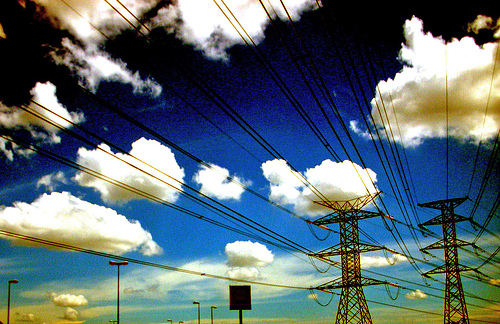
The Parliament sitting on March 7th 2011 will table the Renewable Energy Bill 2010, and the Sustainable Energy Development Authority Bill 2010 for the second reading. Do you know what these bills mean to you?
During the Parliament sitting in December 2010, the Energy, Green Technology and Water Minister, Datuk Peter Chin Kah Fui tabled the Renewable Energy Bill 2010 & Sustainable Energy Development Authority Bill 2010 for the first reading. The second and third reading will be carried out in the next Parliamentary sitting in March 2011, and thereafter Malaysia’s first Renewable Energy Act is expected to come into effect in the second half of 2011.
Based on the feedback gathered, the general public are not aware of these bills, its contents, and what it means to them.
With the aim to create awareness of these bills, we have carried out several discussions and engagements with some professionals from the legal, and renewable energy fields, as well as youth members of the public in order to summarize and explain in very generic terms, what these bills mean.
These bills are seen as a catalyst for renewable energy generation and it is aligned with Malaysian government’s aims to achieve 5.5% renewable energy in Malaysia’s total energy mix by 2015. It is also a major element in Malaysia’s roadmap to its COP15 pledge to reduce carbon intensity by up to 40% by 2020.
Sustainable Energy Development Authority Bill 2010
The Sustainable Energy Development Authority Bill 2010 will establish the Sustainable Energy Development Authority (SEDA), where its main function is to spearhead the development of renewable energy in Malaysia. It will also act as the focal point to assist the Minister on climate change matters relating to energy.
SEDA will be led by a chairman, a chief executive officer, and a team of not more than nine members. The membership of SEDA will be appointed by the minister. They will have the authority to employ employees or committees to perform its functions.
The operational expenses of SEDA, including the remunerations of its employees, will be borne by the Sustainable Energy Development Authority Fund, which derives its income from various means, including funds provided by the Parliament.
As such, SEDA and its employees are deemed to be civil servants whose salaries are paid partly using the tax payers’ money.
One specific function of SEDA is to implement and manage the Feed-in Tariff (FiT) mechanism, which forms the essence of the Renewable Energy Bill 2010.
The essence of the RE bill is a proposed feed-in tariff (FiT) mechanism. The FiT mechanism allows electricity produced from renewable energy sources to be sold to utilities companies at a premium rate for a specific duration. The government hopes that this could be the answer to the slow implementation and take up of renewable energy generation in the country, a task in which the 5th Fuel Policy, and the Small Renewable Energy Program haven’t been successful so far.
Under the FiT, up to 30MW of electricity generated from four renewable sources, solar photovoltaic, biogas, biomass, and small hydro, are eligible to apply to connect its power generator to the national grid, and sell the power back to utilities companies (TNB in Peninsular, SESCO in Sarawak, and SESB in Sabah).
Applications for the sales will be handled and approved by SEDA, and when approved, the successful applicant will be paid by FiT using funds available in the Renewable Energy Fund. The FiT rate and effective period varies based on the different renewable energy sources and methods, and is subjected to an annual fixed degression rate.
The degression is intended to be common in the renewable energy industry, and its aim is to be part as a means for gradually eliminating the premium paid to renewable energies relative to the so-called market price. The degression is intended to account for lower costs to generate renewable energy as production volumes increase and the technology moves down the learning curve.
When the cost of electricity produced from the renewable source becomes cheaper than the electricity produced from the grid, FiT will cease to be paid using the Renewable Energy Fund. Instead the utilities companies will assume the payment because the cost to buy from the renewable energy generator will be cheaper than the cost of producing its own electricity.
Renewable Energy Fund
The Renewable Energy Fund will be established and administered by SEDA. This fund will derive its income from various legal means, two of which, are sums provided by the Parliament and allocation from current electricity tariffs.
Essentially, tax payers will be paying partly to this fund, through our taxes, and a tariff paid from our electricity bill by the utilities companies. At press time, it is still unsure whether the tariff paid will translate into an increase in our electricity bills, or it will be taken from the utilities companies’ income.
The utilities company will recover from this fund, the difference between the FiT it pays out to renewable energy sources and the normal cost it incurs to purchase electricity from traditional sources.
Summary
In summary, under the RE bill 2010, what it means to us is, if you are in Peninsular Malaysia, and have a solar photovoltaic generator at home, you can apply to connect this generator to the grid, and get paid for selling the electricity to TNB for up to 21 years. For you, it could mean that you pay less for your monthly electricity bill, or you could even earn extra income if you generate more electricity than you consume.
TNB, having to pay extra to buy more expensive electricity from you, will be compensated from the Renewable Energy Fund that the tax payers contribute to.
The payment to you will be expensed from the Renewable Energy Fund, until the cost of buying electricity from you is lower than the cost of TNB buying electricity from its traditional sources.
So, are you ready to make your house a renewable energy generator?
Part 2 of the article will highlight some key concerns of the industry, and public we spoke to.
Chow Pong sells black in the day and turns green at night; “I fade in and out of existence; and I walk both worlds, to deliver the message in completeness.”

Great Article. I really enjoyed to read this article. I love the way you discuss the topic great work thanks for the share.
That's really a nice read on Renewable Energy Bill 2010 this part is great.
RE Act is a fantastic step in the right direction but implementation will determine whether it's worth it for the tax payer, TNB and the environment. Without efficiency targets/standards, without implementation in areas that actually require electricity, without enforced degression rates, this could end up being a very expensive exercise that serves little economic, social or environmental need.
Btw, who is checking/balancing the carbon cost of producing solar panels and disposing of all the battteries versus the carbon gains?
If the aim is to reduce our carbon footprint, then the Bill should be redrafted as our "Low Carbon Energy Bill" to let all low carbon energy sources into our system. They should all compete equally to supply us with clean electricity as cheaply as possible.
In any case, the suggestion by Energywise that efficiency criterion must be included for sensible decision-making is excellent… for our pocket-books!
Energywise: Indeed you are wise… our taxes are going to subsidise these schemes for little public benefit or carbon alleviation… but much private gains!
For an Engineer's perpective of the Renewable Energy Bill 2010
covering the several forms of renewable energy please see: http://www.rank.com.my/energywise
Thanks for this article, appreciate it
@azmo
You mean WEST Malaysia's power production is at 50+% oversupply, you've left out 50% of the country's landmass who need RE legislation passed in order to move forward with alternative sources of power production to solve severe debilitating power problems.
poor, poor tnb.
i mean, yes, renewable energy is the way to cut dependence on fossil fuel. but with malaysia's power productions is at 50+% oversupply, tnb paying for every unit produced whether it is sold or not as part of the power purchase agreement. the question that pops who is buying all the power.
and now with nuclear on the way, and all the plants producing power, the green way, that will also be sold to tnb alone. and tnb will have to buy them, whether required or not as per agreement.
now, who is going to buy it?
Thanks CP!
Don’t we have figures at this moment, like FIT rate/kWh, Renewable Energy Fund size in RM, etc? And what about FIT payments being for net electricity generated or for total?
Just came from a Greens MP talk about climate change and policy. FIT is key to getting our economies and systems to decarbonise, but with limits of 30MW, it will be too slow and almost meaningless.